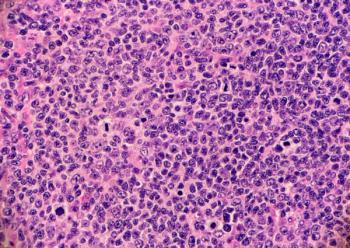
How Under-Utilized Data Becomes RBM Solution
As the attention on risk-based monitoring continues, more companies and sponsors are revealing their past and present strategies to address or improve this area of clinical trials.
SPOTLIGHT EVENT
Cambridge, MassachusettsDownload Brochure
RELATED
-
- Risk-Based Approaches
- ICON Exec Discusses ICONIK MonitoringMore in Risk-Based Monitoring
As the attention on risk-based monitoring continues, more companies and sponsors are revealing their past and present strategies to address or improve this area of clinical trials. One newer vendor on the scene,
Blueprint’s co-founder and President, Courtney McBean, has a pet peeve with the status of clinical data. “We are spending extraordinary amounts of money and resources and time collecting data in these clinical trials, and in my opinion, woefully under-utilizing that data to manage the trials better, more effectively, and to advantage future trials, with the information that we’ve collected from our past experiences.” This situation is no one’s fault. Based on the fact that clinical trials professionals are moving quickly and focusing on absolute deliverables, including regulatory reporting requirements, and publications. But in the process McBean says, “We’re missing this great opportunity to make better use of the data that we’ve got coming in and use it intelligently to make good decisions about how we manage our trials.”
McBean’s views come from her experiences in clinical research. Starting with her Master’s degree in public health, she moved to academic research. Then moved into the medical device area, where she worked for industry for the last 15 years prior to founding Blueprint Clinical in April 2012. She both designed and managed large device trials, then moved into managing centralized and field-based monitoring teams. She developed monitoring strategies for different clinical trials; as well as outsourced models for monitoring. “I really developed an interest in learning how do we monitor effectively and efficiently as these trials get bigger and bigger and we’re required to do more and more clinical research,” explained McBean. “Some medical device companies are already doing a less-than-100% [SDV] approach. I won’t say necessarily a true risk-based approach in the way the FDA has described it, but it’s definitely thought-out according to the type of trial and level of regulatory rigor behind it.”
The companies that McBean managed the monitoring for both had redesigned their monitoring processes and structure. Combine that with research McBean has conducted toward Blueprint’s risk-based monitoring solution in the last two years, she says, “I don’t think it necessarily means that everybody has to move to risk-based. But what it does do is make people think differently about how they are monitoring and how they’re managing their trials in general. And it allows people to change things up a bit when they hadn’t wanted to or hadn’t been comfortable before, just because of this mindset of 100% monitoring.”
It’s now clear--and maybe no surprise to some--that there are companies that have been doing less than 100% for quite some time. But the process of having data in numerous spreadsheets, or pulling reports from separate EDC systems, or paper documents, is not efficient and quite difficult from a manual standpoint. “I’m convinced that you need technology to help you—well-designed technology—to help you understand what’s happening at your sites, and painting that whole picture of how sites are performing within the context of the study.”
So with the timing of the FDA guidance, and industry acceptance of a less than 100% monitoring effort, McBean and co-founder Trevor McCaw designed Blueprint Clinical Compass, a tool that address site monitoring through a variety of features, incorporating both a qualitative and quantitative view of the data. Part 2 of this interview will focus on the Compass solution.
Newsletter
Stay current in clinical research with Applied Clinical Trials, providing expert insights, regulatory updates, and practical strategies for successful clinical trial design and execution.




